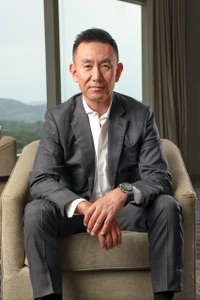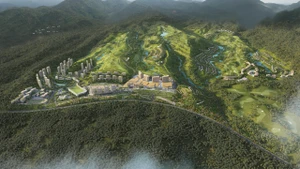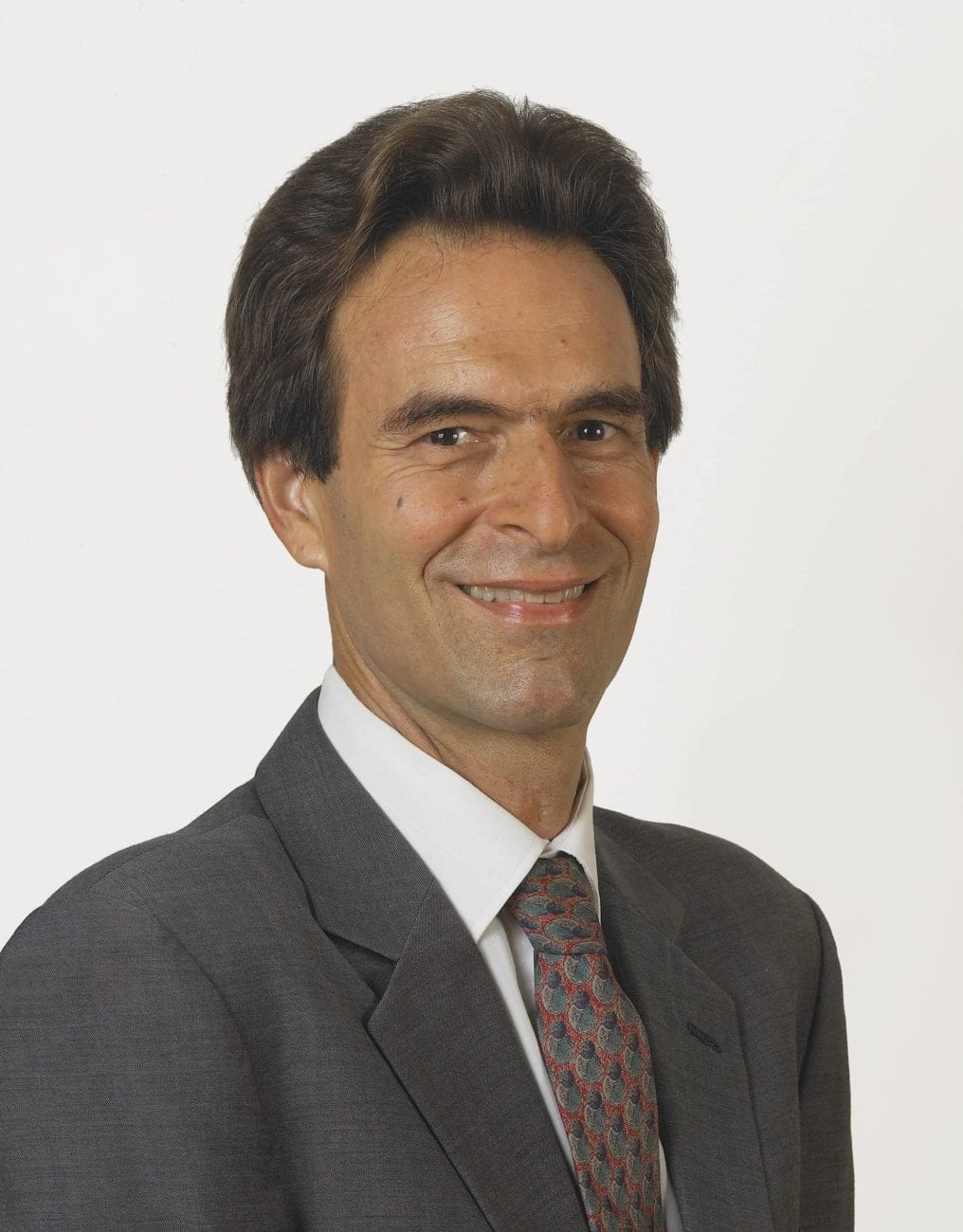Dae Sik Han believes the best defence is a good offence. That principle guides Hann Philippines’ groundbreaking projects transforming Clark, a highlands getaway two hours north of Manila, into an international destination for gaming, leisure and more.
“When big IR operators realise the potential of Clark, if they step in the Clark market, if I’m not ready to compete with them, then all of the things that I have achieved will go down the drain. That’s why I have to push myself to the limit to expand and expand and expand,” the chairman and CEO of Hann Philippines says.

Han’s drive created Hann Resort, raising the bar with Clark’s first five-star properties – a third is under development – amid top shelf cuisine, retail and gaming.
In Clark Freeport, a special economic zone including portions of Central Luzon’s Pampanga and Tarlac provinces, Han is also developing multi-billion dollar Hann Reserve. This far more ambitious lavish living concept features a half-dozen luxury hotel brands, residences, golf, eco-tourism and education with the first phase due for completion next year. True to form, Han is expanding both trailblazing projects.
Second option, first mover
“As soon as you step into a business, there are basically two options. One, you just lay back, you see what other people are doing and then just try to follow them. If you choose this option, then sooner or later, your competitor will eat into your market and you die out. But you don’t need to have a lot of stress and you don’t need to take risks like a first mover.
“But the other option is if you want to be the first mover. It could be risky, in a sense that nobody has done this thing and you’re going to be the first one. You don’t know whether the market will accept this thing. That is the second option. Most times, I pick the second option.”
Han took that second option with Clark Marriott Hotel, the centrepiece of Hann Resort. “They didn’t believe the Clark market was mature enough to have this five-star hotel brand. But I insisted on the Marriott brand. At the time, I believed there was demand, but there was no proper facility that people can enjoy. When I opened this Marriott, they realised there is a nice place to enjoy in Clark instead of going to Manila,” Han says, noting that within a year, the hotel reached 80% occupancy.
Following number one
Hann’s success hasn’t gone unnoticed. “If someone moves ahead and it works, other people realise, ‘It’s nice, so why don’t we do the same?’” Han says. “If you don’t follow number one, then you’ll die out. So they have to follow. Other developers are really trying to come up with something like better facilities in terms of quality and service.”
Indeed, in January, Belle Corp announced it is seeking an integrated resort site in Clark. Belle, owner of Melco-operated City of Dreams Manila, is the gaming arm of SM Group, controlled by heirs of Henry Sy, the richest family in the Philippines.
Clark catalyst
“It’s amazing to observe the state of energy and economic vibrancy to be found in Clark today following decades of recovering from the impact of the Mount Pinatubo eruption and departure of US forces in the early 1990s,” Marelene Phillips, who grew up in Pampanga in the 1960s and 1970s and has returned to visit family regularly while running a regional communications consultancy in Singapore since 2000, says.
Clark provides the special sauce spicing Han’s ambitions. Its countryside has for decades been a popular getaway for urban dwellers, similar to the Catskill Mountains north of New York City. Resorts and casinos have been part of the leisure landscape, along with fresh air and open spaces in the shadow of the massive US Clark Air Force base.
In 1991, amid volcanic ash from Pinatubo and a Philippine government decision not to renew the lease, US forces left the base that began as cavalry outpost Fort Stotsenburg in 1903.
The Philippine Air Force took over the military facilities and the government created a special economic zone of some 35,400 hectares (87,438 acres or 136.7 square miles) to promote foreign investment and create jobs, especially in export industries, overseen by the Bases Conversion and Development Authority.
Infrastructure improvements
Infrastructure projects to support those ambitions followed. Clark International Airport opened in 2004 and has undergone expansion over the past two decades, growing passenger capacity to 11 million. Traffic peaked at 4 million in 2019, rebounding to 2 million in 2023 and 2.4 million last year, 65% on international flights, consistent with long term trends. The airport, call letters CRK, had 19,221 flights last year, 47% domestic and 53% international.
When Han first saw CRK he noted: “I believed that someday, somehow the Philippine government has to find a way to utilise this Clark airport because it doesn’t have enough money to build a new airport for Manila.”
Indeed, Han’s instinct is proving correct as a high speed rail link between Clark and the capital region’s Ninoy Aquino International Airport rattles toward completion in 2027. The line will cut travel time between NAIA and CRK to less than one hour, facilitating flight connections and general travel to Clark. A new highway from Manila to Baguio will reduce road trip time to Clark.
Clark airport authorities are investing incrementally toward construction of a second runway, aiming to make CRK a major Asia-Pacific logistics centre as well as enhancing its role as a national gateway.
K-Vacay
For Hann Resorts, Clark airport provides a vital pipeline to guests from South Korea. “As far as headcount is concerned, we’re having 60% to 65% local and then the rest, 35% to 40%, is international,” Han says, with Koreans comprising more than 90% of international visitors.
Han, in his mid-50s, was born in Korea and got his start in the family construction firm that branched into development. Han’s knowledge of the Korean market, longstanding ties between Korea and the Philippines as the closest tropical vacation spot, a place to learn English and a business destination, plus easy access via CRK, make Hann Resorts a potent magnet for Korean travellers.
About 40% percent of Clark’s international flights serve Korea, and CRK is just a 10 minute drive to Hann Resorts. With a less crowded arrival experience than Manila, guests can be at their hotels within a half hour of touchdown. Hann Reserve will be similarly convenient to the airport.
Hann Philippines traces its roots to the Widus Hotel and Casino, opened in 2006. It grew into Hann Resorts with the addition of Clark Marriott and, in 2022, the Philippines’ first Swiss Hotel. The 11-hectare complex also features upmarket shopping at 8th Avenue and more than a dozen F&B choices that make it a culinary landmark in Clark. The gaming floor has 199 tables, 960 slots and 40 electronic gaming terminals.
Top of the game
Han claims Hann Resorts has grown its Clark gaming revenue share to “45%-46%, so we’re pretty dominant in the market.” Based on the latest available Pagcor reports, Clark GGR for the first three quarters of last year was PHP20.6 billion (US$350.7 million), which would put Hann Resorts’ GGR around PHP9.9 billion, extrapolating to PHP13 billion for the full year. Pagcor confirms that Hann Resorts has the largest GGR of any casino outside Metro Manila.
Clark’s January through September 2024 GGR rose 1.4% compared with 2023 as the entire Philippine market takes a breather from breakneck post-pandemic growth and domestic online gaming explodes.
Clark figures include a 17% decline in the third quarter that a senior Hann executive tells iGB resulted from a drop in junket play at other casinos that did not impact Hann. The executive says Hann Resorts’ GGR grew 9% in the first three quarters and it needs additional gaming capacity.
“Right now casino expansion is under construction,” Han says. “We’re going to inject more or less 500 slots and around 60 to 80 tables.” The 22,113 sqm, two-storey addition includes both mass and VIP gaming space. However the majority of added floor area will be dedicated to F&B with an emphasis on Korean, Chinese and Japanese cuisine. The first level is slated to open late this year with the upper floor due for completion in early 2026.
Breaking the billion barrier
Han says the US$250 million expansion will push total spending on Hann Resorts beyond US$1 billion. And there’s still more to come: Han told iGB the Intercontinental Hotel announced in July for Hann Reserve will instead be built at Hann Resorts.
The project, “a $600 million-ish investment”, is in the design phase, according to Han, with construction planned to begin in the middle of this year for a 2029 opening.

“I am investing back all of the money that I can generate from operations, hotel and casino operations, everything, 100%,” Han says. “Plus I’m having pretty strong support from local banks, unlike before. When I started the business around 18 years ago, it was very, very difficult to talk to local banks, but now they have seen the potential of the Clark area and the potential of my project. So they’re very supportive.”
In November, Philippine lenders Asia United Bank and Union Bank signed a PHP6 billion (US$103 million) deal to support the Hann Resorts expansion.
Han is also “modelling a stock market listing” in the Philippines. Other Philippine casino companies are publicly listed, most notably Enrique Razon’s Bloomberry Resorts that operates Solaire in Entertainment City and opened US$1 billion Solaire North in Quezon City last year.
Equity financing would help pay for Hann Reserve, the US$4 billion luxury mixed use project 12 kilometres from Hann Resorts. “Right now, I’m focusing on Hann Reserve,” Han says. “What I enjoy is building something different from somebody else.”
Going natural
Han acknowledges the success of themed resorts in Macau but sees a key limitation: “All of the attractions they can provide are inside the building. So I was thinking, in the Clark area we are surrounded by very nice nature.” He’s using that natural setting to differentiate Hann Reserve, with a particular emphasis on eco-tourism and golf.
“That’s why there will be three golf courses designed by Nicklaus Design, [Korean golf star] KJ Choi and Nick Faldo, and there will be a lot of outdoor attractions. All of the things in the development that we’re doing are nature driven.” Hann Reserve also strives for maximum sustainability through green architecture, efficient development in harmony with the natural landscape, appropriate local technologies and waste management.
In November, Hann broke ground on a 10-hectare public park combining eco-tourism, outdoor sports, fitness and Philippine folklore to be completed in three phases from late next year as part of Hann Reserve. On the golf side, Hann secured a Philippine exclusive to create a Professional Golfers Association of America (PGA) player development facility and it has high hopes of securing golf tour events.
“More than just a brand”
Overall, Hann Reserve will encompass 450 hectares, although Han tells iGB the project will ultimately reach 600 hectares. Phase one, due to open in 2027, includes a Banyan Tree hotel and residences along with the Nicklaus golf course amid mountainous terrain.

Future phases will include accommodations from Accor’s SO, Sofitel and Emblems brands and Marriott’s Westin and Luxury Collection. To further bolster Hann Reserve’s residential appeal, Han plans to add a “prestigious international school” along with a commercial centre.
Han’s ethos that more is better extends to the second N added to his company names. “The name Hann is more than just a brand,” he says. “It represents my vision of elevated experiences, luxury and innovation. The addition of the second N was a deliberate decision to create a distinct and impactful identity, one that reflects strength, balance and sophistication. It embodies our commitment to excellence and sets the foundation for world class hospitality and entertainment.”
Clark and Philippine gaming and tourism undoubtedly say “Amenn” to that.

Muhammad Cohen is a former US diplomat and current iGB Asia editor at large. He has covered the casino business in Asia since 2006, most recently for Forbes, and wrote Hong Kong On Air, a novel set during the 1997 handover about TV news, love, betrayal, high finance and cheap lingerie.
Original article: https://igamingbusiness.com/casino/property-development/hann-philippines-dae-sik-han/















